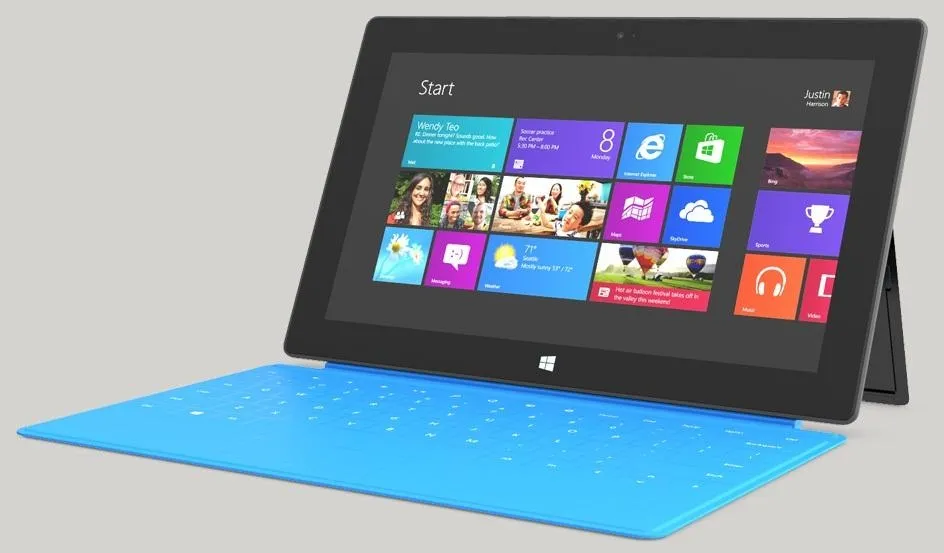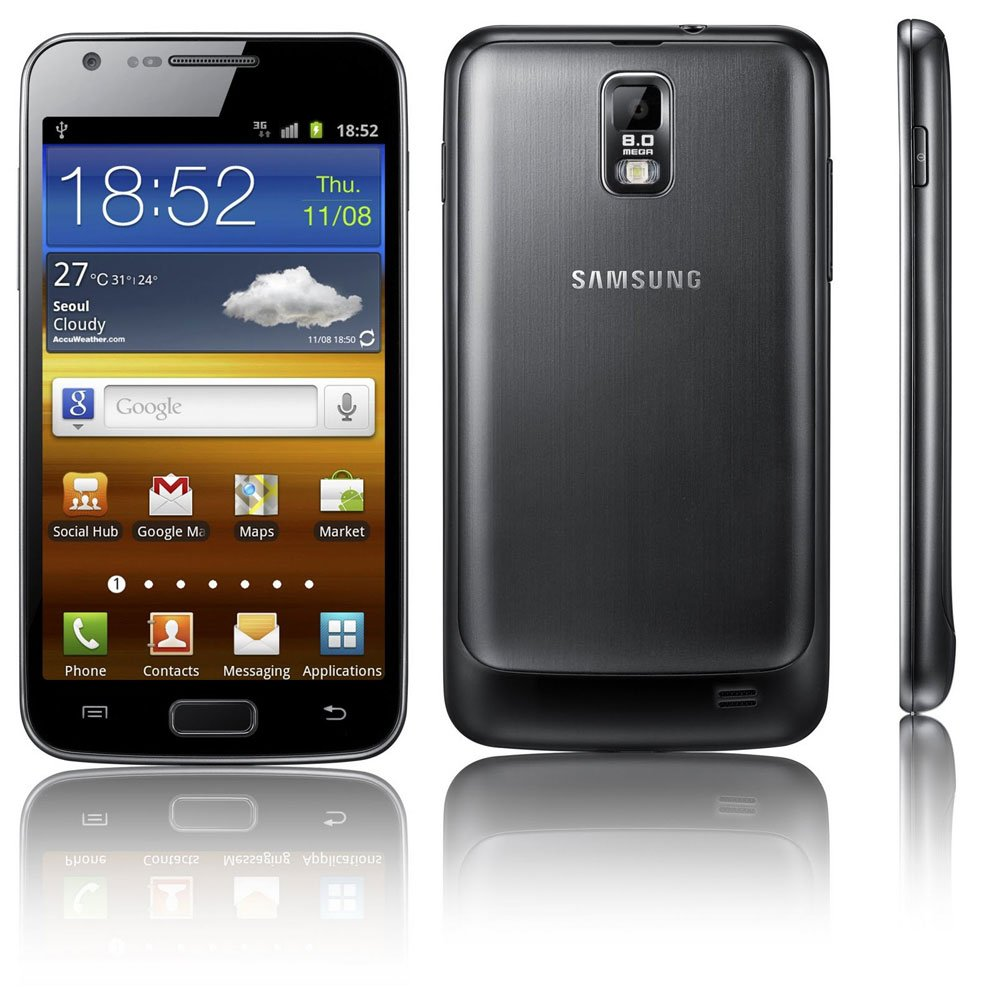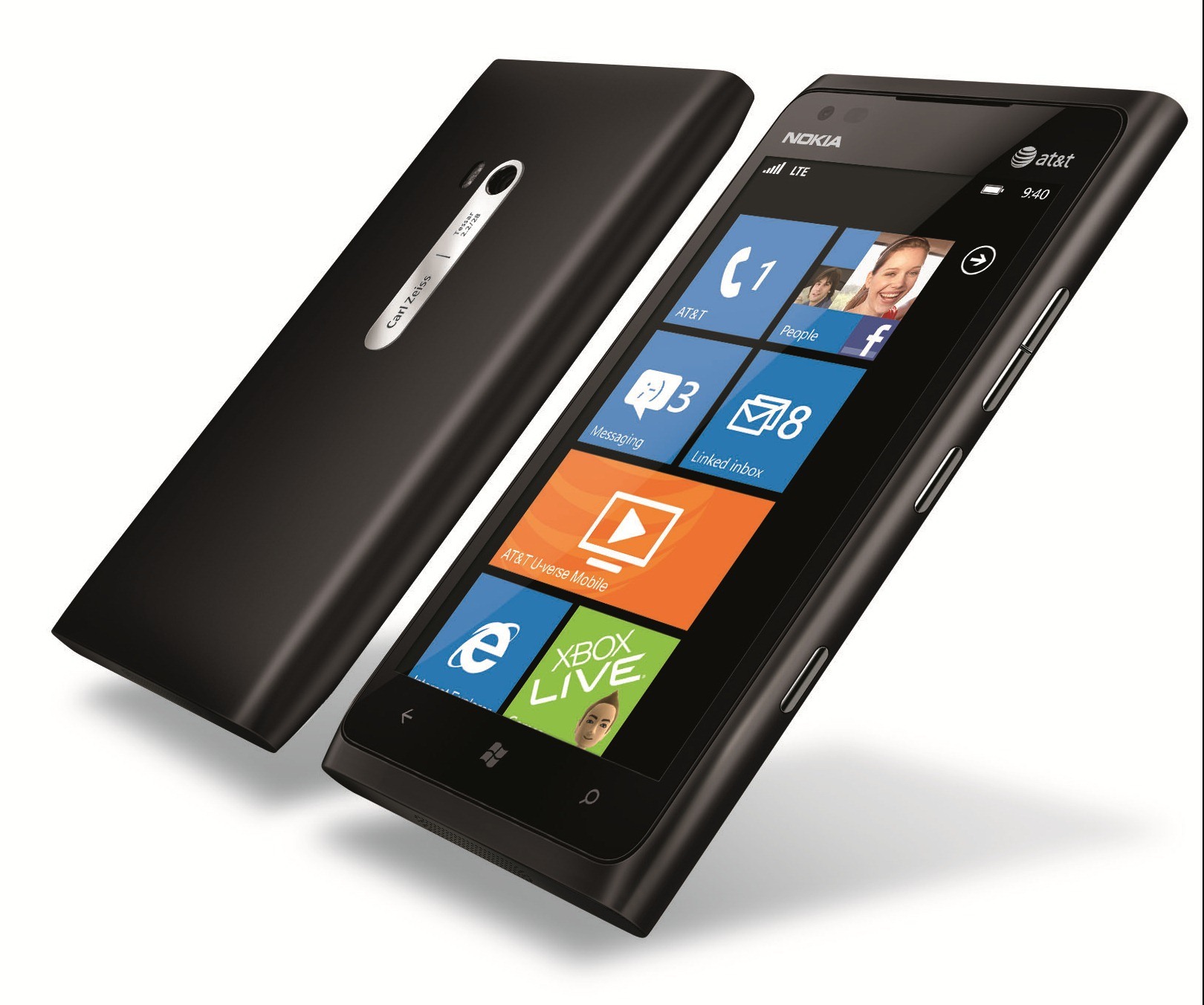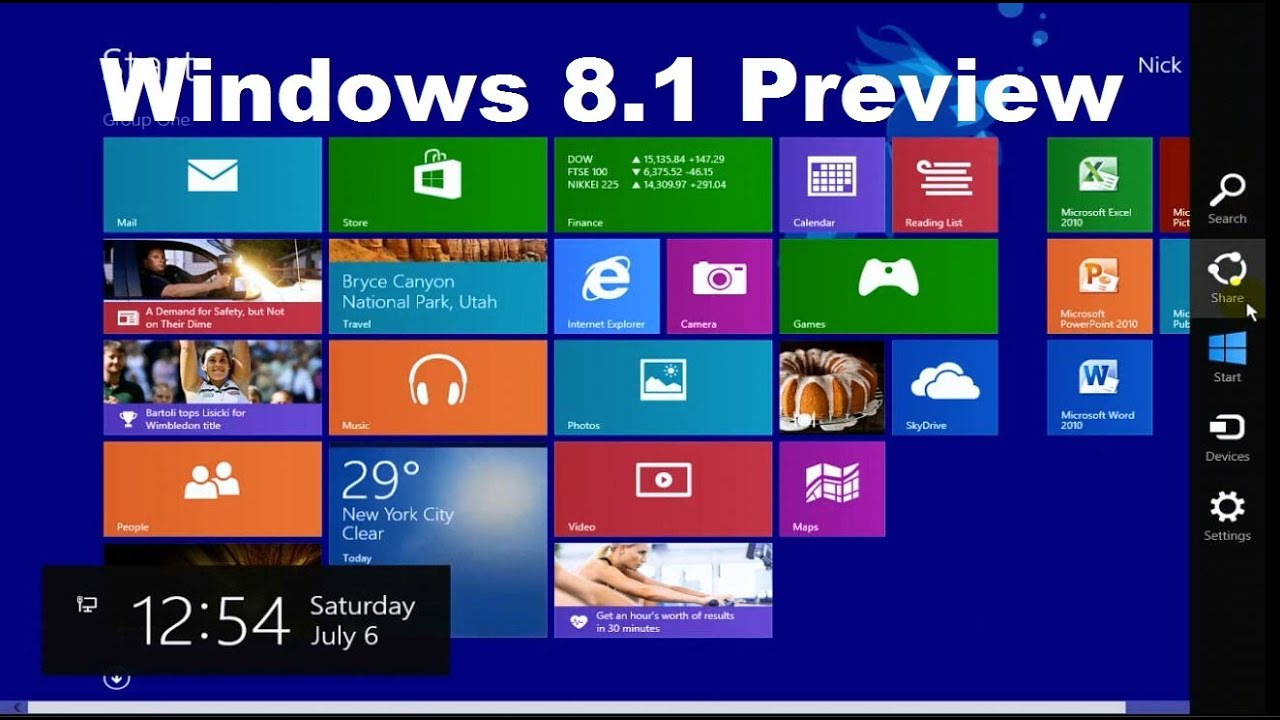Windows 8 touch devices have transformed the way we interact with technology, offering a blend of intuitive design and powerful functionality. From the moment of its release, Windows 8 was crafted with touch compatibility at its core, creating a robust platform for a new generation of touch-enabled tablets for Windows 8. As manufacturers rolled out the best touch screen PCs for Windows 8, users gained access to innovative devices that truly leverage the operating system’s features. With Windows 8.1 introducing even more touch features, the Windows touch device landscape has become increasingly diverse, catering to a wide array of user preferences. Whether you’re considering a sleek tablet or a hybrid PC, the options available make it easier than ever to embrace a touch-centric experience.
The evolution of touchscreen technology has prompted a reevaluation of how we engage with our devices. Devices running Microsoft’s latest operating system are designed to maximize touch input efficiency, seamlessly integrating our interactions with digital environments. As we delve into the realm of touch-sensitive gadgets, it’s essential to explore which devices perform best under this innovative framework. With an influx of hybrid models and dedicated tablets on the market, each equipped to handle the unique features of Windows 8, users are presented with an extensive selection. Understanding these advancements is crucial for anyone looking to enhance their computing experience in an ever-evolving digital world.
Exploring Windows 8 Touch Compatibility
When Windows 8 was released, its compatibility with touch devices marked a significant shift in user interaction, paving the way for a more intuitive experience. Microsoft designed this operating system to seamlessly integrate with a variety of touch-enabled devices, allowing users to navigate through apps and settings with ease. Key elements like swipe gestures and on-screen keyboards have become foundational features that enhance usability across various platforms, whether on tablets or hybrid machines.
Despite initial limitations in the hardware offered at launch, the landscape has evolved to include a plethora of devices compliant with Windows 8 touch features. From sleek tablets to innovative hybrid PCs that serve dual purposes, the range of touch devices has expanded, offering more choices for consumers. This adaptability not only accommodates traditional workflows but also embraces modern, touch-centric tasks that users expect.
Best Touch Screen PCs for Windows 8
If you’re in the market for a touch screen PC that fully utilizes Windows 8, there are several standout options available. Leading manufacturers have introduced models that boast high-resolution displays and robust performance, designed specifically for the touch interface. Devices such as Microsoft’s Surface Pro line and HP’s Envy series combine powerful hardware with responsive touchscreens, making them ideal for both work and play.
Moreover, features like enhanced multitasking capabilities, improved touch sensitivity, and support for stylus input have made these touch PCs appealing to a broader audience. Users can seamlessly switch between applications while enjoying the fluidity that touch controls offer, allowing for a faster and more productive work environment. As the touch device market continues to grow, finding the best option tailored to individual preferences and needs is easier than ever.
Windows 8.1 Touch Features Enhancements
With the release of Windows 8.1, Microsoft introduced several enhancements geared towards improving the user experience on touch devices. These updates included better navigation tools, such as the return of the Start button and the ability to customize the Start screen layout for touch interactions. Improvements in gesture recognition also allowed users to interact more naturally with their devices, making tasks simpler and more intuitive as a result.
Furthermore, Windows 8.1 embraced applications that were designed with touch functionality in mind, allowing users to leverage the full potential of their touch screens. The introduction of more touch-oriented apps and an improved Windows Store facilitated easier access to a range of functionalities that could be easily controlled via touch, enhancing overall user satisfaction and engagement with the system.
Touch-Enabled Tablets for Windows 8
The availability of touch-enabled tablets for Windows 8 has significantly altered how users approach mobile computing. Tablets harness the capabilities of Windows 8’s touch interface, offering lightweight and versatile solutions for both casual browsing and intensive productivity tasks. Premium models deliver superb display quality and battery life, making them appealing for both work and media consumption.
Many users find that touch-enabled tablets seamlessly transition between personal and professional use, featuring software that supports productivity while also providing entertainment options. With the proliferation of applications designed for touch interaction, Windows 8 tablets cater to a diverse range of user needs, making it easier than ever to choose a device that fits individual lifestyles.
Navigating the Windows Touch Device Landscape
As the market for Windows touch devices continues to expand, consumers are met with an increasingly diverse landscape of options. From traditional laptops outfitted with touch screens to ultra-portable tablets and innovative hybrids, users can find devices that suit their unique preferences and usage patterns. This variety reflects the growing trend towards touch technology in personal computing, adapting to the needs of contemporary users who value both flexibility and performance.
In navigating this landscape, it’s essential for users to consider their specific needs. Factors such as device performance, touch sensitivity, and battery life play crucial roles in determining the best fit. With emerging technologies steadily increasing the capabilities of these touch devices, users can look forward to an enriched experience that caters to all aspects of their digital lifestyle.
Choosing the Right Windows Touch Device for You
Selecting the right touch device for Windows 8 can be a daunting task given the plethora of available options, but it can be simplified by understanding individual needs and use cases. Factors such as screen size, type of touch capability, and brand reliability should be prioritized based on how you plan to use the device. For instance, heavy multitaskers may prefer a hybrid model with robust multitasking features, while casual users might lean towards a lightweight tablet.
Additionally, it’s important to consider future updates and support for the operating system. Devices that are expected to receive updates to Windows 10 or beyond may provide better longevity and ensure access to the latest features and security. Ultimately, taking the time to research and evaluate different models will pay off by ensuring that you choose a device that will serve you well for years to come.
The Role of Touch Technology in Today’s Computing
Touch technology has become an integral part of computing in today’s digital landscape, especially with the introduction of operating systems like Windows 8 that cater specifically to touch interactions. This technology allows for more immersive experiences and has been embraced across various devices, ranging from smartphones to laptops. As we move forward, the ability to interact with devices through touch is expected to become even more prevalent, changing how we engage with technology on a daily basis.
Moreover, the shift towards touch interfaces signifies a broader transformation in user expectations and how they interact with software. Today’s users are more accustomed to touch gestures and fluid interfaces, which encourage a more dynamic approach to productivity and entertainment. This evolution pushes manufacturers to innovate constantly in their design and hardware capabilities, ensuring that the user experience keeps pace with technological advancements.
Future Trends in Windows Touch Devices
Looking ahead, the future of Windows touch devices seems bright, with innovations on the horizon that promise to further enhance user experience. Companies are investing in research to improve the responsiveness of touch screens, incorporating features like gesture recognition and haptic feedback that mimic physical interactions. These advancements will enable more sophisticated interactions that blend the physical and digital worlds effectively.
Additionally, as artificial intelligence begins to play a larger role in personal computing, we can expect to see more refined touch experiences that learn from user behavior, making computing even more personalized. The continued development of apps specifically designed for touch functionality will also drive the ecosystem forward, making Windows touch devices not just tools but essential companions in an increasingly digital world.
Frequently Asked Questions
What are some of the best touch screen PCs for Windows 8?
When looking for the best touch screen PCs for Windows 8, consider models like the Dell XPS 11, Lenovo Yoga 2 Pro, and the Microsoft Surface Pro 2. These devices are designed to fully leverage the touch capabilities of Windows 8, offering a seamless touchscreen experience.
How does Windows 8 touch compatibility enhance user experience?
Windows 8 touch compatibility offers a more intuitive user experience, allowing users to navigate with gestures, taps, and swipes. This functionality is particularly effective in applications optimized for touch, making the interaction smoother and more engaging than traditional mouse and keyboard setups.
What are the key touch features of Windows 8.1?
Windows 8.1 introduced several touch features that improve usability, including enhanced multitasking with split-screen app views, improved touch gestures, and access to the Start screen with a simple swipe. These features cater specifically to touch-enabled tablets for Windows 8, providing a more fluid experience.
Are there touch-enabled tablets for Windows 8 that are worth buying?
Yes, there are several touch-enabled tablets for Windows 8 that are highly recommended, such as the Microsoft Surface 3 and the HP Envy x2. These devices not only support touch inputs but also come equipped with powerful hardware to run desktop applications.
How is the Windows touch device landscape evolving?
The Windows touch device landscape is evolving rapidly, with manufacturers releasing innovative devices that blend traditional PC functionality with touch capabilities. This trend is driven by the increasing demand for touch-enabled devices, making it essential for users to stay updated on the latest offerings.
What should I consider when acquiring a Windows 8 touch device?
When acquiring a Windows 8 touch device, consider factors such as screen size, battery life, processing power, and build quality. Additionally, ensure the device is designed to utilize Windows 8 touch features effectively, enhancing your overall experience.
Will future updates improve touch features on Windows 8 devices?
While Windows 8 is an older operating system, future updates will be limited. However, transitioning to Windows 10 or later versions will provide more advanced touch features and improved compatibility with newer touch devices.
Can I upgrade my non-touch Windows 8 PC to use touch features?
Unfortunately, upgrading a non-touch Windows 8 PC to utilize touch features isn’t possible. You’ll need to invest in a touch-enabled device to take full advantage of Windows 8 touch compatibility.
What types of applications work best with Windows 8 touch devices?
Applications designed specifically for touch interaction, such as interactive games, drawing tools, and productivity apps like Microsoft Office, work best with Windows 8 touch devices, optimizing the touchscreen environment for users.
| Key Point |
|---|
| Windows 8 was designed with touch devices in mind but had limited compatible touch devices at launch. |
| Since launch, manufacturers have introduced a variety of touch-enabled devices to enhance user experience. |
| Innovative designs include traditional PCs with touch screens, tablets, and hybrids catering to the touch interface. |
| The rise of touch devices indicates the future of computing is increasingly touch-based. |
| Users are encouraged to consider how they use Windows 8, with a focus on touch capabilities. |
Summary
Windows 8 touch devices represent a significant shift in how users interact with their computing systems. While the initial launch faced challenges with a limited selection of touch-enabled PCs and tablets, the market has evolved dramatically since then. Today, there is a broad array of devices that leverage the touch features integral to Windows 8, including traditional PCs, innovative tablets, and hybrid models. As the trend towards touch-based interfaces continues to grow, users are prompted to reassess their approaches to using Windows 8, whether by upgrading to a new touch device or maximizing the functionality of their current setup.







